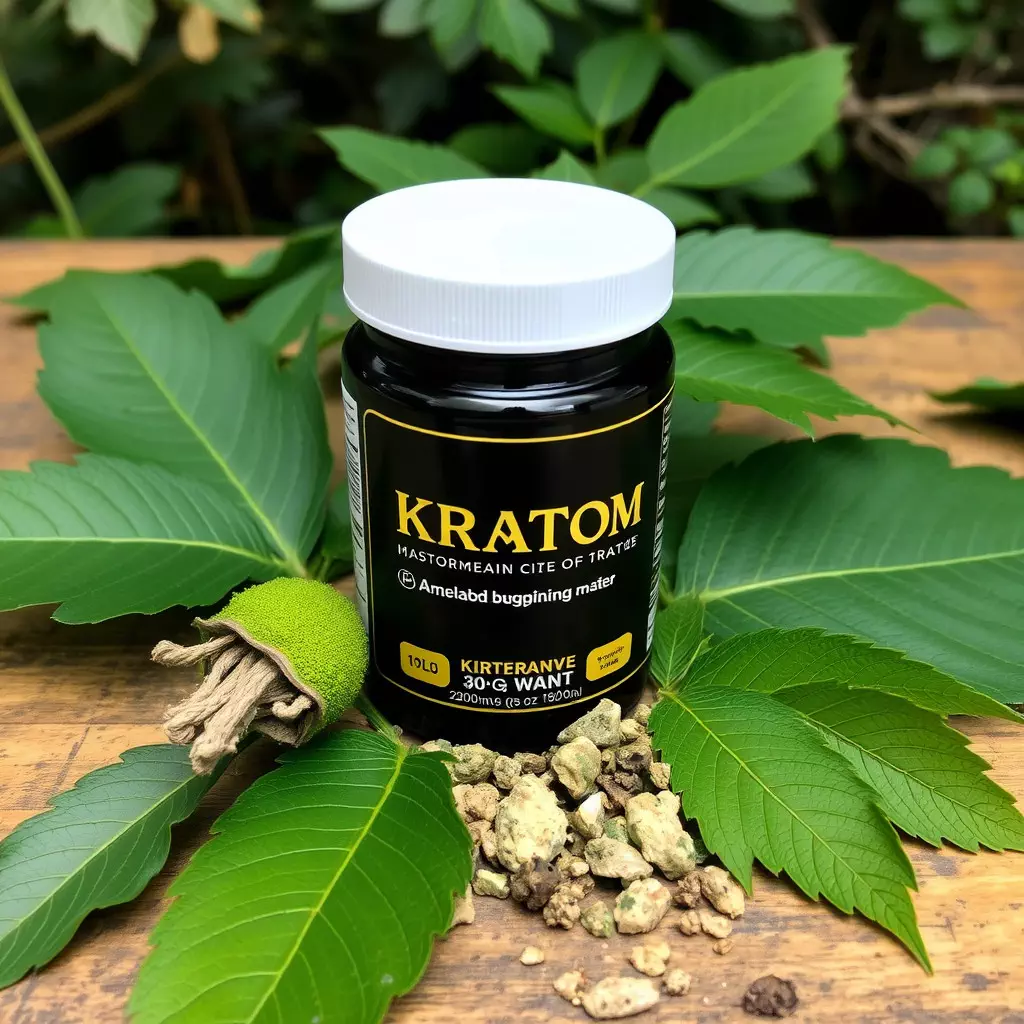Kratom, derived from the Mitragyna speciosa tree, has gained attention as a natural remedy for joint pain relief. Its active alkaloids, mitragynine and 7-hydroxymitragynine, may interact with opioid receptors to offer analgesic benefits, potentially easing discomfort from arthritis or other joint conditions. While some users report significant pain relief from certain kratom strains like Maeng Da or Bali, it's crucial to approach its use with caution due to the need for precise dosing and careful strain selection, as well as potential interactions with other medications. The safety and effectiveness of using kratom for joint pain are highly individual and should be discussed with healthcare professionals. It's important to consider that kratom might also influence mood and energy levels, which could be beneficial in a holistic approach to injury prevention, recovery, and overall well-being, providing joint pain relief without the common side effects of traditional opioids. Always consult with medical experts before incorporating kratom into your health regimen for informed and safe use.
exploring the potential of kratom in safeguarding joint health, this article delves into the multifaceted relationship between kratom and injury prevention. From elucidating how kratom contributes to joint pain relief to outlining strategic measures for preventing injuries, we examine the efficacy of kratom use in managing joint discomfort and facilitating recovery from injuries. As a natural substance with alkaloids that may offer analgesic properties, kratom holds promise for those seeking alternative methods for joint pain relief and injury management. Join us as we navigate the complexities of integrating kratom into injury prevention and treatment regimens responsibly.
- Understanding Kratom's Role in Joint Pain Relief
- Strategic Injury Prevention through Kratom Use
- Effective Kratom Management for Joint Pain and Injury Recovery
Understanding Kratom's Role in Joint Pain Relief

Kratom, a plant native to Southeast Asia, has garnered attention for its potential role in joint pain relief. The active compounds found in kratom leaves, known as alkaloids such as mitragynine and 7-hydroxymitragynine, are believed to interact with the body’s opioid receptors, providing analgesic effects that can help alleviate joint pain. Individuals experiencing discomfort due to arthritis or other joint conditions may explore kratom as a natural alternative to conventional pharmaceuticals. Its efficacy in managing chronic pain is supported by anecdotal evidence and emerging research, suggesting that certain strains of kratom may offer significant relief for those suffering from joint pain.
When considering joint pain relief with kratom, it’s crucial to approach its use with caution and informed guidance. The interaction of kratom with opioid receptors can pose risks, especially when combined with other pain medications or substances. Therefore, individuals should consult healthcare professionals before integrating kratom into their joint pain management regimen. Proper dosing and monitoring are essential to ensure safety and efficacy, as the optimal strains and dosages can vary based on individual health profiles and the severity of joint pain. Understanding kratom’s potential benefits and risks is key to responsibly utilizing it for joint pain relief.
Strategic Injury Prevention through Kratom Use

Incorporating kratom into a strategic injury prevention plan can be a consideration for individuals seeking natural joint pain relief. Kratom, derived from the leaves of Mitragyna speciosa, has been traditionally used in Southeast Asia for its analgesic properties. When integrated thoughtfully into an injury prevention regimen, kratom may offer joint pain relief by mitigating inflammation and discomfort associated with various forms of arthritis or sports-related injuries. For those engaged in physically demanding activities, the anti-inflammatory and painkilling effects of certain kratom strains can enhance recovery times and reduce the risk of further injury due to overexertion. It is important to approach the use of kratom with caution, as it can interact with other medications and has potential side effects; thus, consulting healthcare professionals beforehand is advisable for safe and effective use.
Furthermore, strategic injury management can also benefit from kratom’s therapeutic effects. In cases where joint pain persists, the opioid-like analgesia provided by kratom may offer temporary relief, allowing individuals to engage in physical therapy or rehabilitation exercises without the same level of discomfort. The ability of kratom to potentially alleviate chronic pain can be instrumental in maintaining an active lifestyle conducive to preventing further injury. However, due to the varying strains and their unique alkaloid profiles, it is crucial to select kratom varieties that offer both pain relief and promote healing without compromising overall health or leading to dependency. Proper dosing and consistent monitoring by medical professionals are key to ensuring that kratom is used as a supportive measure within a comprehensive injury management plan.
Effective Kratom Management for Joint Pain and Injury Recovery

Kratom, derived from the leaves of Mitragyna speciosa, has garnered attention in various natural health circles for its potential role in joint pain relief and injury recovery. When managing joint pain, certain strains of kratom, such as Maeng Da or Bali, are often cited for their analgesic properties, which can help alleviate the discomfort associated with arthritis or joint inflammation. The alkaloids present in kratom, primarily mitragynine and 7-hydroxymitragynine, may interact with opioid receptors in the brain to produce pain-relieving effects without the side effects typically associated with prescription opioids.
For those recovering from injuries, kratom may offer a supportive role in managing the pain that often accompanies healing. It is important to consult with healthcare professionals before integrating kratom into an injury management plan, as dosage and strain selection can vary based on individual needs and circumstances. Additionally, kratom’s effects on mood and energy levels can be beneficial for individuals whose recovery process may also involve a psychological component. By potentially enhancing one’s overall well-being and reducing pain, kratom may aid in the holistic approach to injury recovery, allowing for a more comfortable and effective healing experience. As with any natural or pharmaceutical intervention, careful consideration of dosage, frequency, and interaction with other medications should be taken into account to ensure safe and effective joint pain relief and injury recovery outcomes.
In concluding our exploration of kratom’s role in joint pain relief, injury prevention, and recovery management, it’s evident that this botanical substance offers potential benefits for those seeking natural alternatives to mitigate joint discomfort and safeguard against injuries. Strategic use of kratom as part of an integrative approach can complement other treatment modalities, fostering a more robust pain management strategy. As with any health intervention, it’s crucial to consult healthcare professionals before incorporating kratom into one’s regimen. Future research should continue to investigate the efficacy and safety profiles of kratom for joint pain relief and injury management to optimize its therapeutic potential while minimizing risks. With careful consideration and professional guidance, kratom may serve as a valuable tool in the arsenal against joint pain and the prevention of related injuries.






